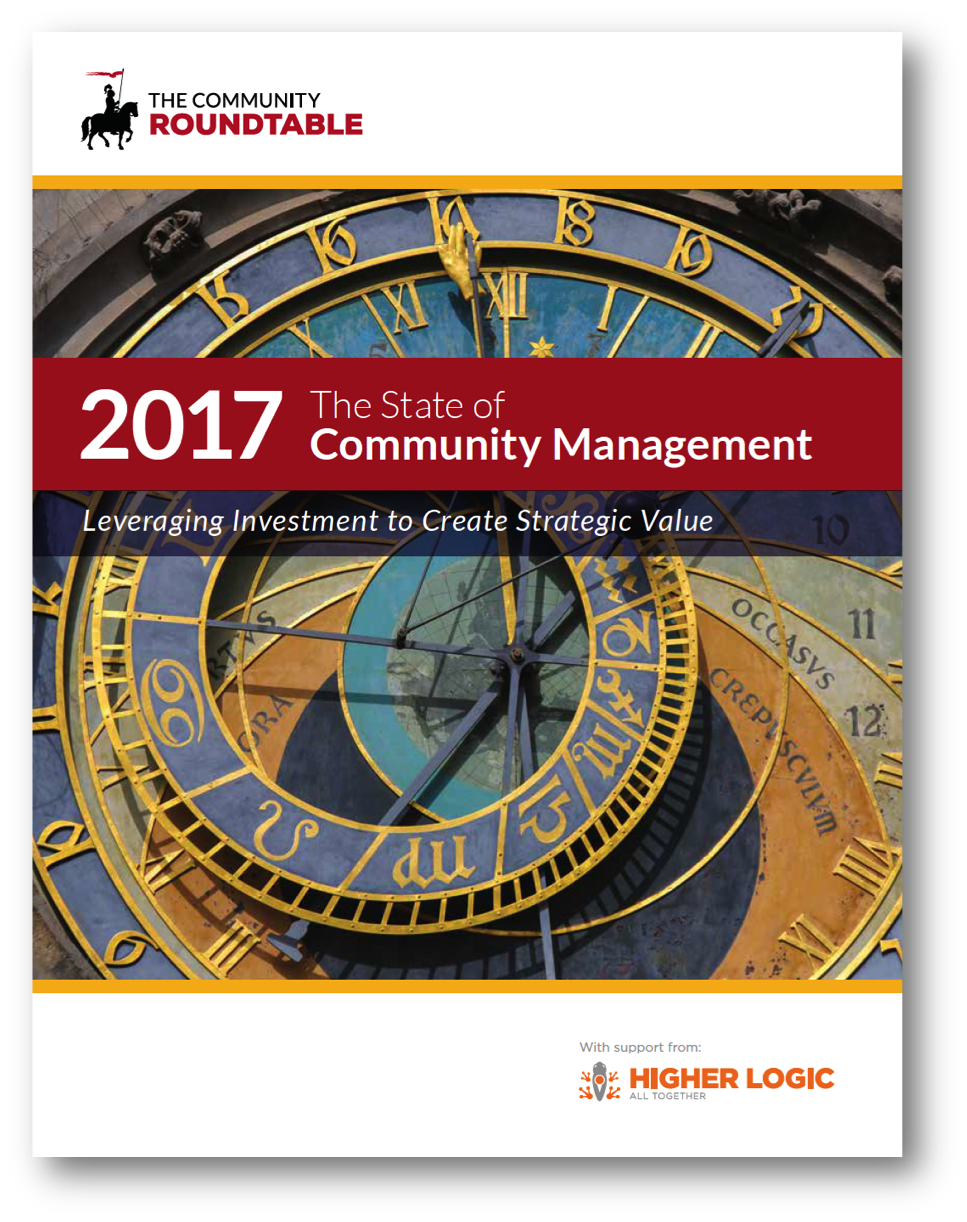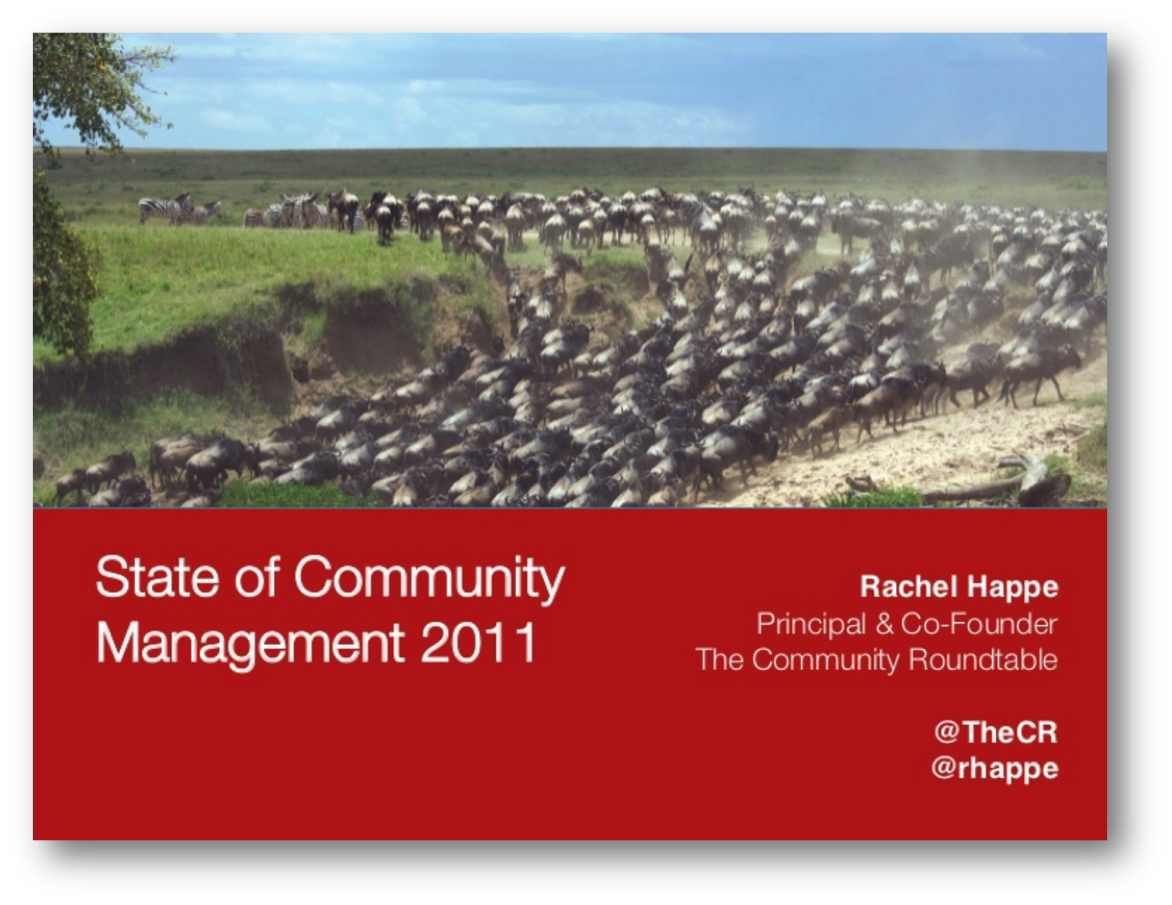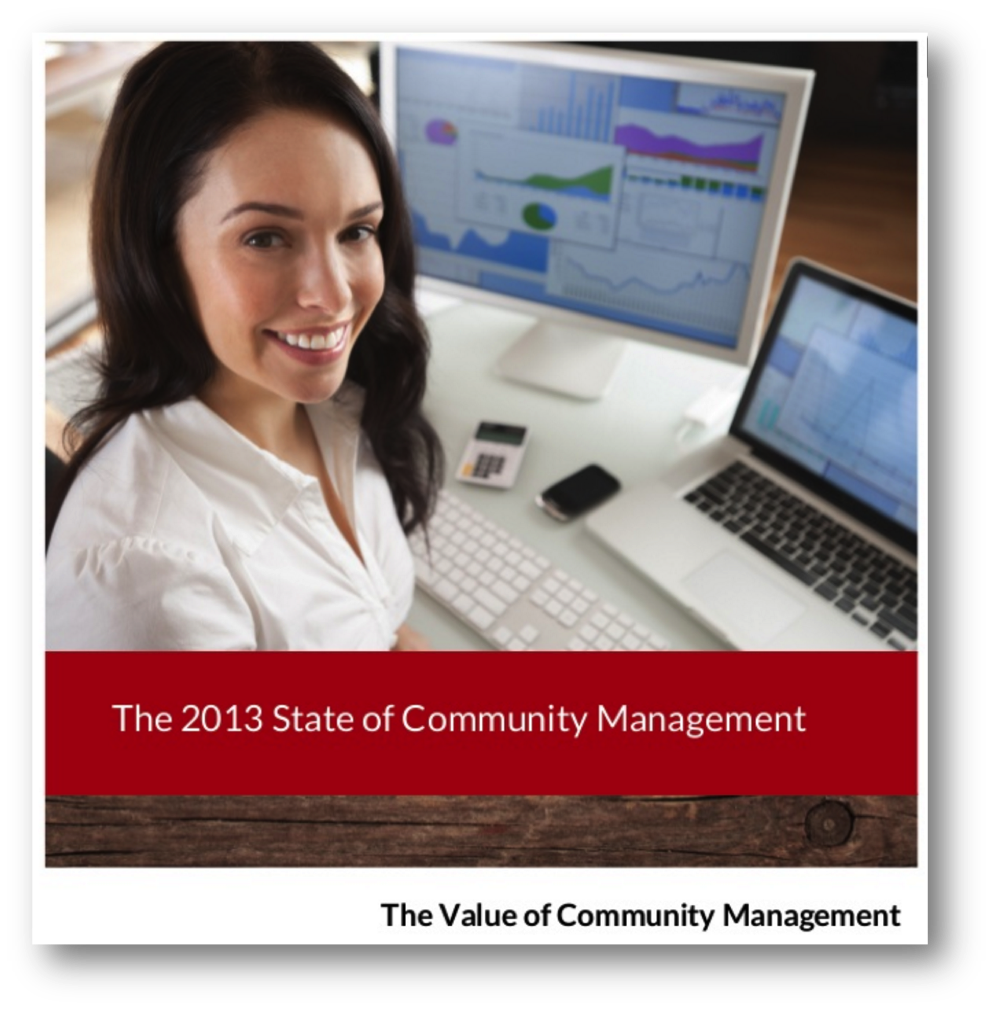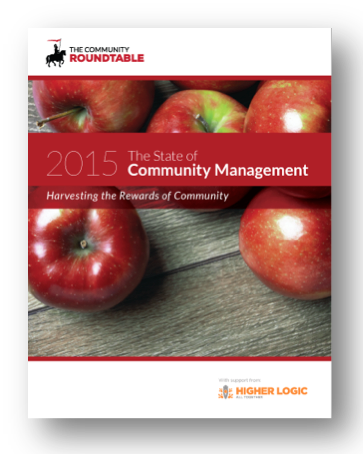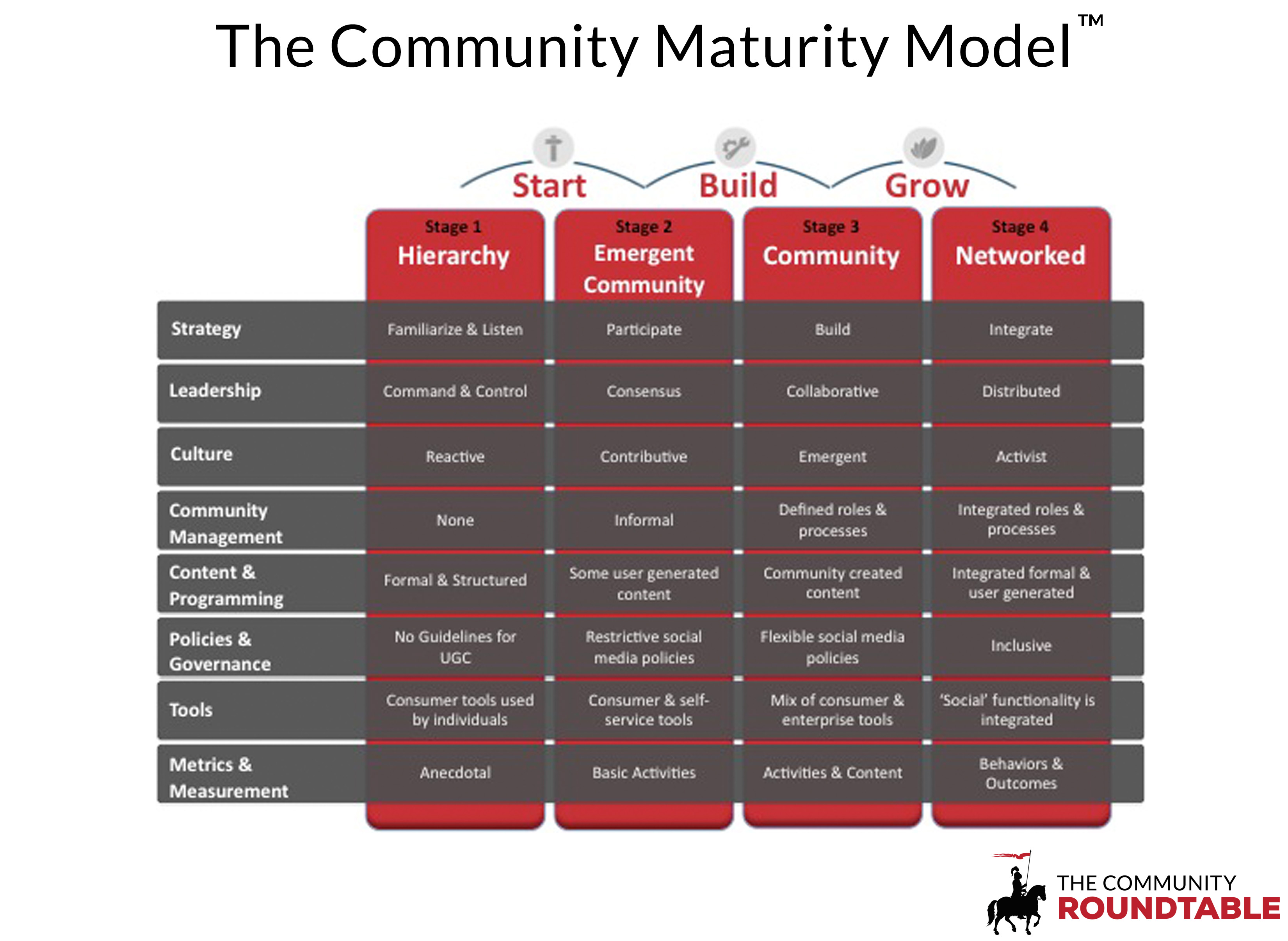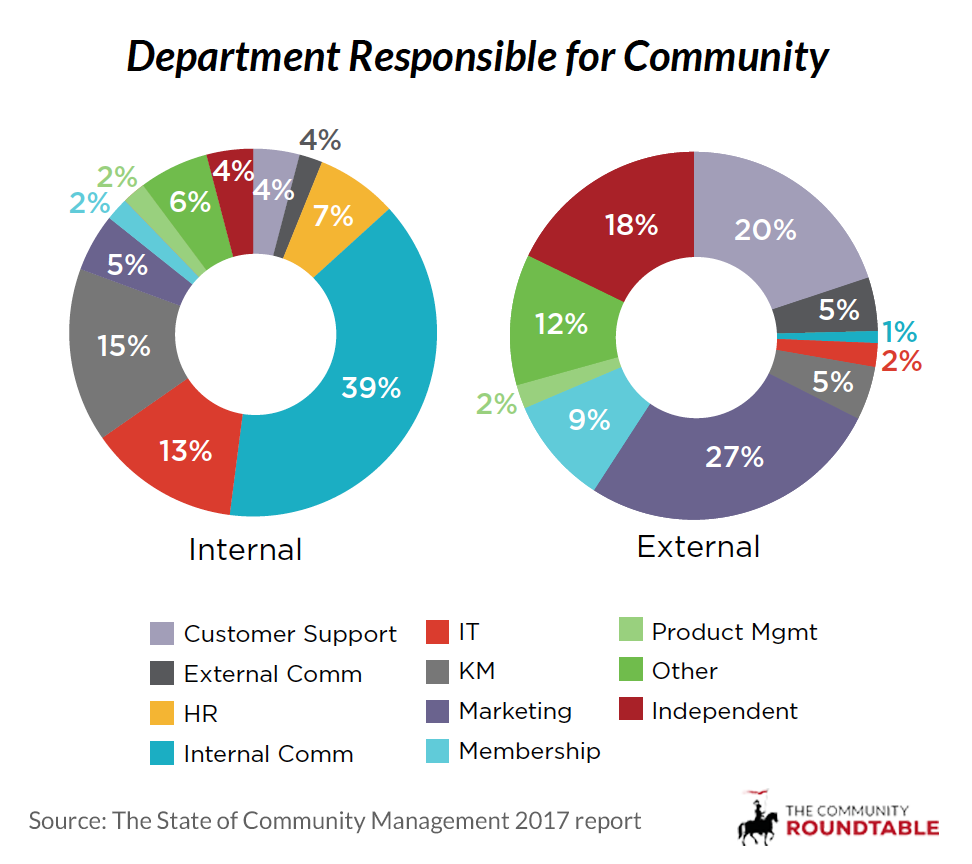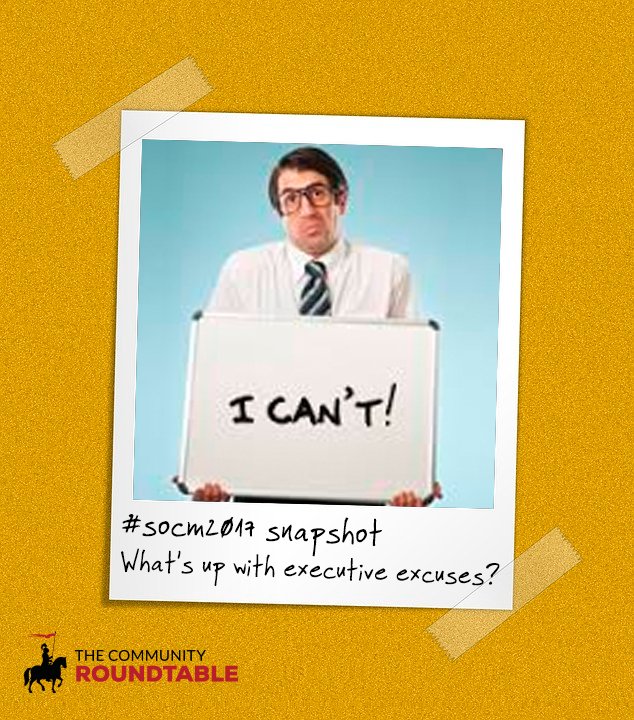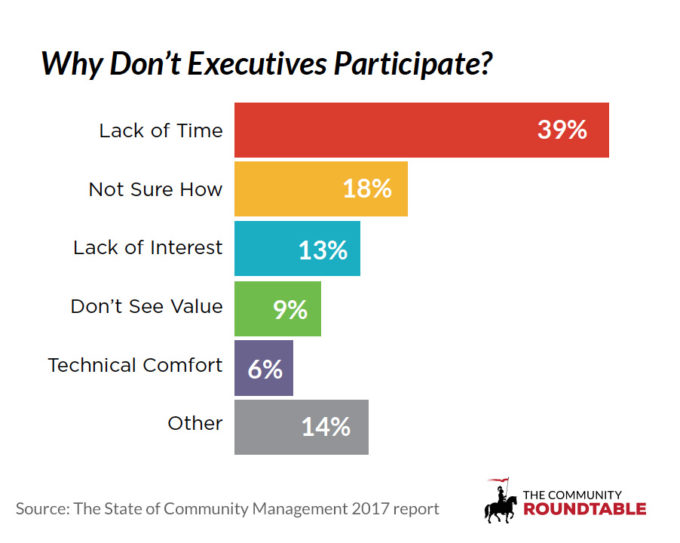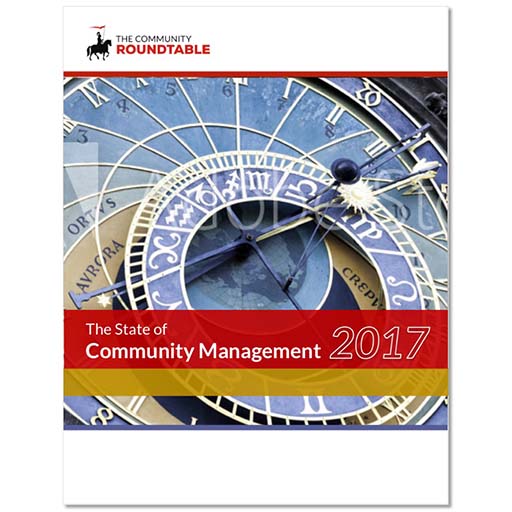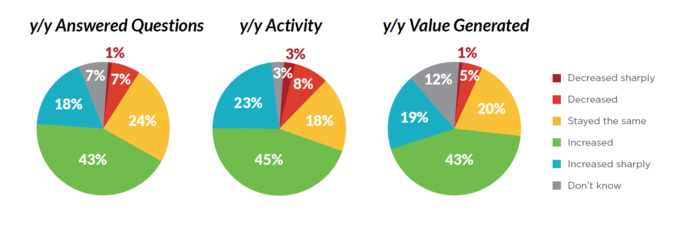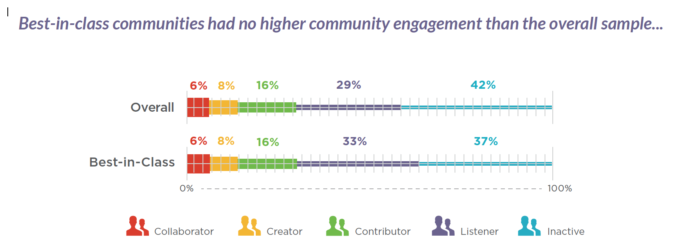By Shannon Abram, Relationship Manager at The Community Roundtable.
Directors of community are responsible for community programs – strategy, governance, team management and budgets. Not every community has a director – instead, a functional executive often takes on these responsibilities. The director of community role is more common in mature communities, in large organizations and in organizations where the community program is central to the business model.
Directors of Community in the Organization
Directors of Community command respect in organizations, both in terms of the number of people they oversee in the organization and the place they occupy in it. 4 out of 5 of those who identify themselves as Directors of Community have direct reports, and most of those have 3 or more of them. When we think about communities being truly integrated into the business, Directors of Community sit in a place to make that happen — our research shows that 83% report to vice-presidents or higher in the organization, including 43% who report to the C-suite.
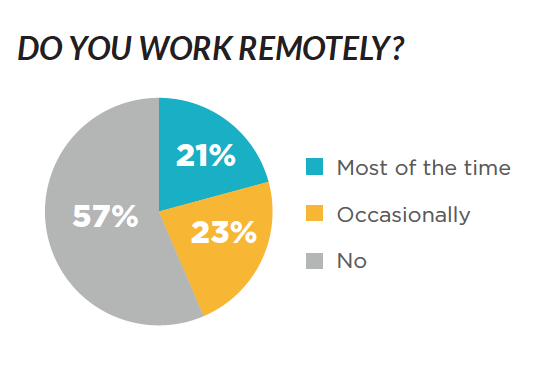
Access to top managers and connection to the business side of things comes at a small cost for Directors of Community, who are expected to be in the office, rather than work remotely. Just 1-in-5 Directors of Community in our sample works remotely most of the time, and a majority are generally found in the office on a daily basis.
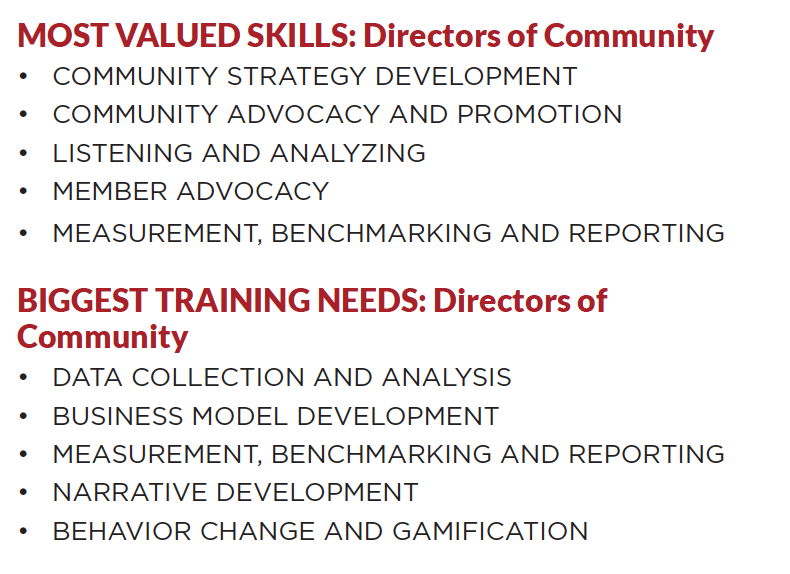
Skills and Training Needs
Directors of Community don’t forget their roots — highly valuing engagement and strategic skills just as strategists and community managers do, but it’s not surprising their biggest training needs revolve around understanding, gathering data and telling the story of the community in a business context. Skills that feed into understanding the value of the community to the organization and to members are also seen as critical.
Want to be a Director of Community?
Your best opportunities may be within your current organization. About half of Directors of Community in our research say they were promoted into their community management role, and nearly two-thirds say they either defined their own position or were approached directly by the hiring manager. Just 13% of Directors of Community say an external job posting led them to their current role.
Are you a Director of Community at your organization? We’d love to hear how your responsibilities and priorities stack up against our survey participants. What is your top community focus for the coming year?
Want to learn more about the director of community role?
Download our Community Careers and Compensation report for free.
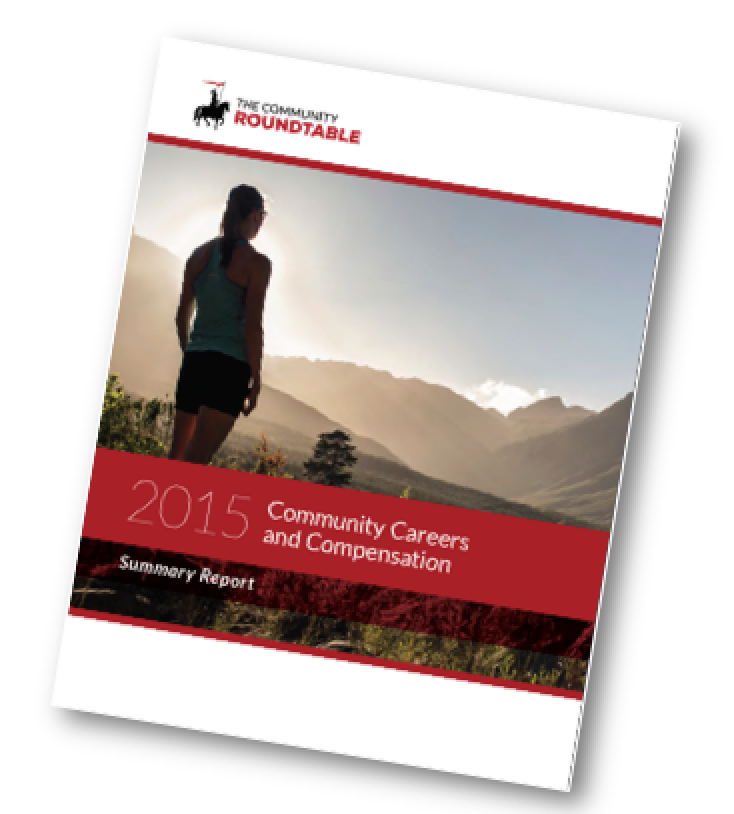
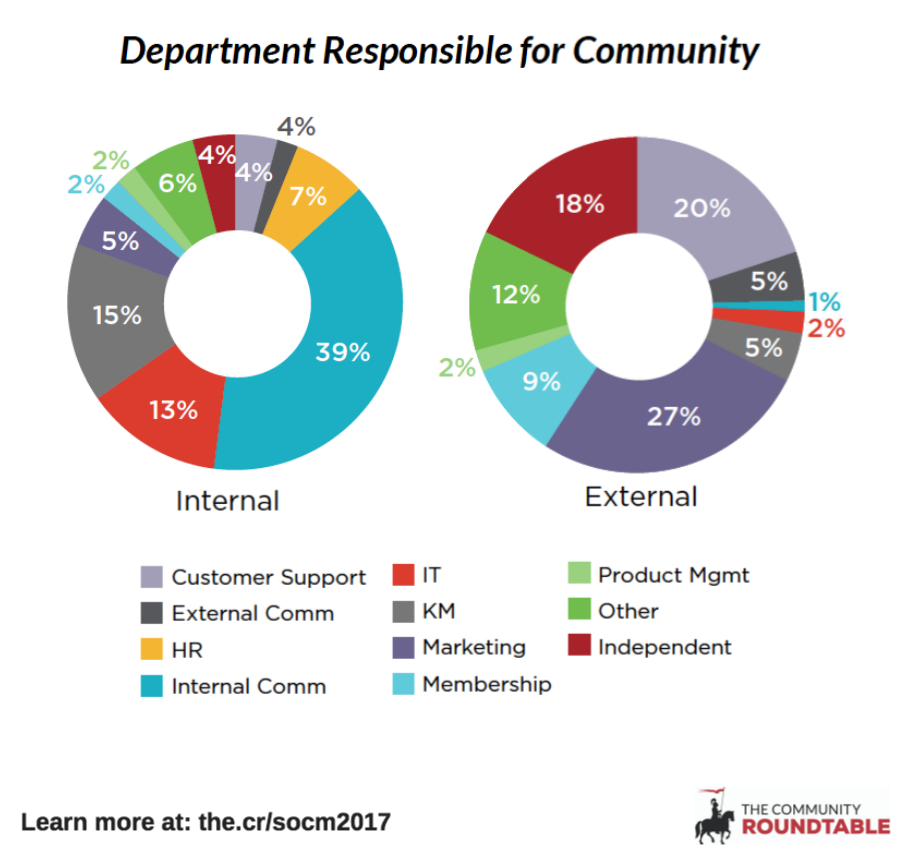
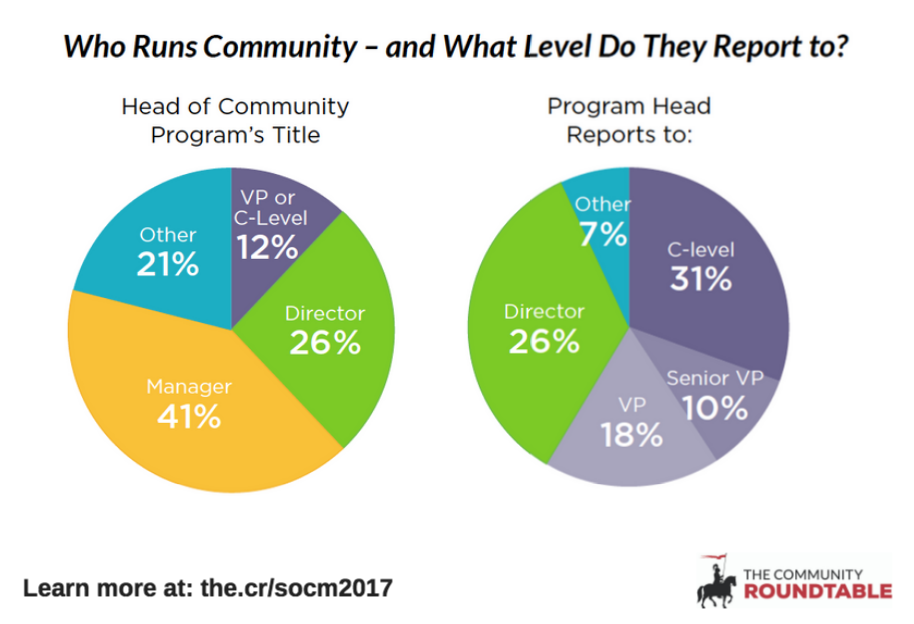
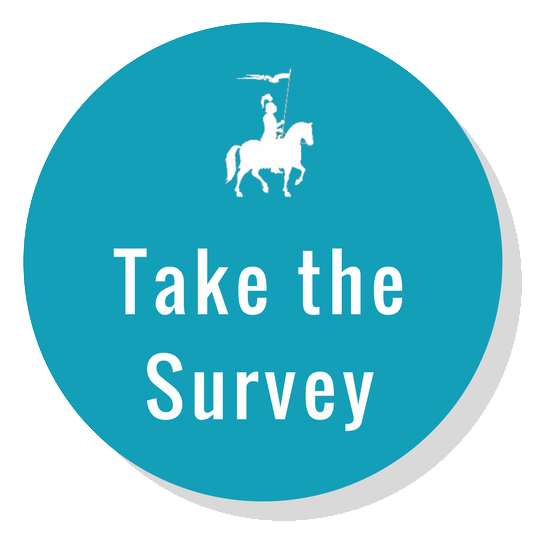
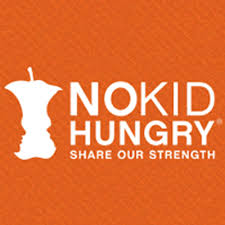
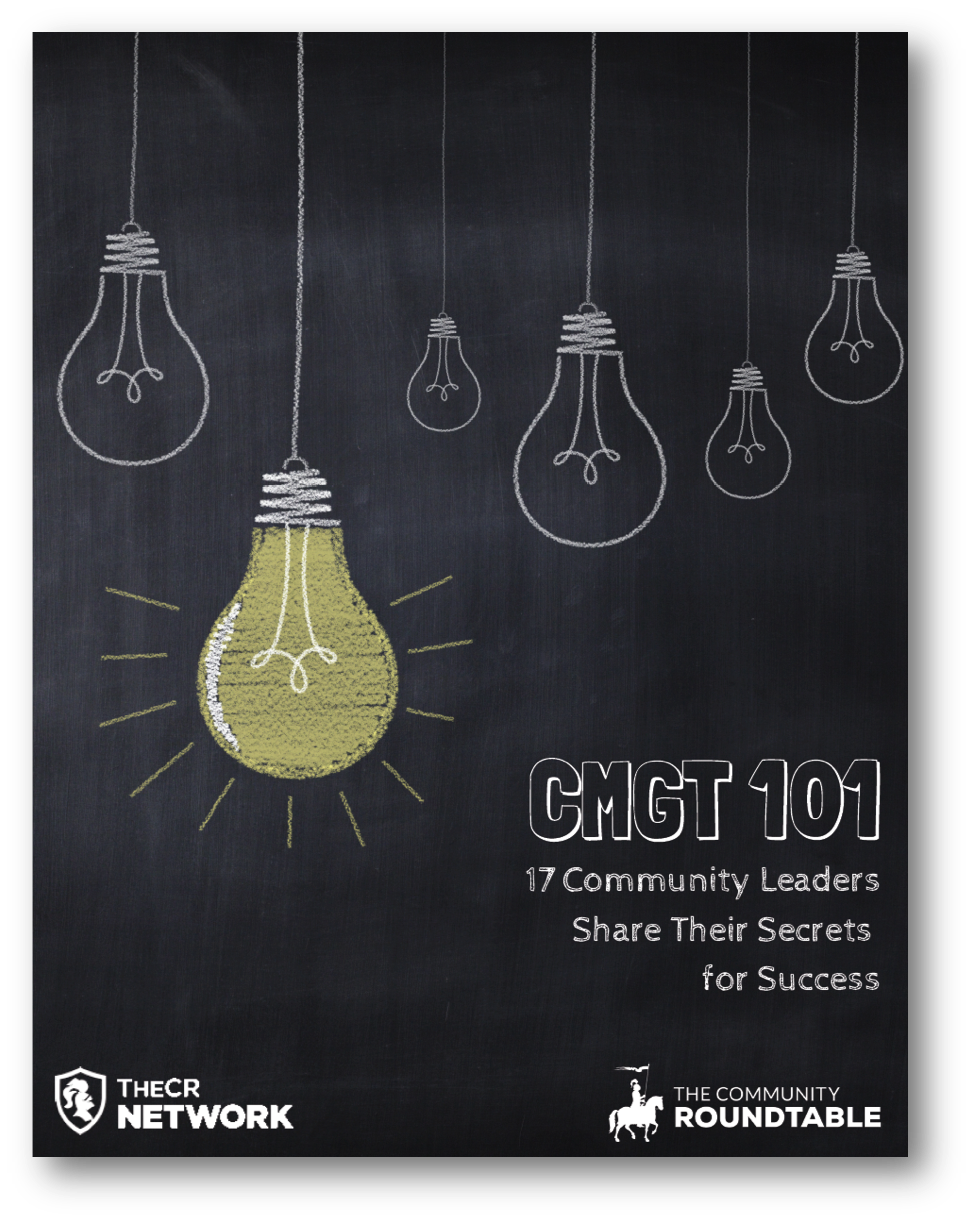
 We’ve always believed that to get the attention and support of stakeholders for the strategic role of community management, we needed to invest in
We’ve always believed that to get the attention and support of stakeholders for the strategic role of community management, we needed to invest in 